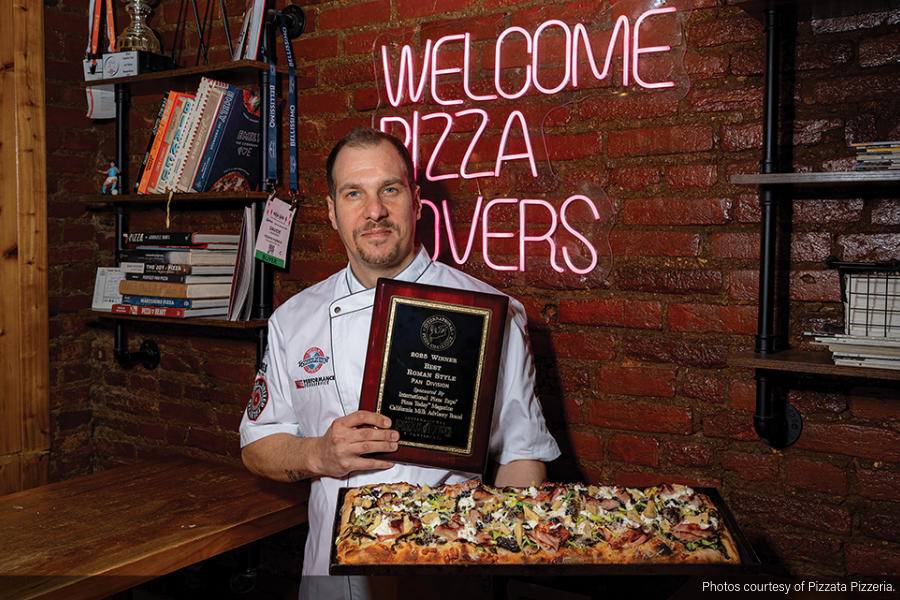Cultivate top-notch leaders within your own staff

Why is it so important to be a leader and not just the boss? A boss uses people. A leader develops people. Isn’t that what we really want in our businesses –– to develop people to reach their full potential, to be enthusiastic star employees trusted to get the job done? Yes. Otherwise we face occupational “burn out” at our own dream job. Working 80 to 100 hours a week and having no life outside of the restaurant leads to sacrifices we’ll soon regret.
Dr. Craig Pearce is an associate professor of management at the Peter F. Drucker and Masatoshi Ito Graduate School of Management in Claremont, California. Pearce’s research has drawn this conclusion: You’ve created a team to solve a problem. Here’s some advice: Don’t put one person in charge. This statement sums up the principle of “shared leadership.”
In theory and practice, this makes a lot of sense. You have a goal and to reach it you bring together the experts on your team: the chef, the social media man, the accountant, etc. Each one contributes his expertise to reach your goal. In our Western culture this happens to an extent, but generally businesses will appoint a ‘boss’ over the team of in-house experts. The issue here is that the boss doesn’t have enough time, energy or information to evaluate the work or suggestions of the team that he has built. So who is the boss? The better strategy is to have the team member whose strengths are needed at the moment take hold of the reigns, sharing the leadership.
Can this really work? Why would I want to give up a measure of control? Pierce tells the Wall Street Journal: “For example, we recently completed a study of 66 companies on the Inc. 500 list, looking at five-year growth in earnings and the number of employees, and surveying top management team members about their experiences. We found that shared leadership was a significant predictor of a company’s growth rates: If a company’s top management team practiced shared leadership, there was an excellent chance that the company’s financials were headed up.” In a personal interview, Pierce stated that practicing shared leadership increased an employee’s productivity 16 percent. I found that amazing as it has often been stated that good management can potentially yield a 10-percent increase in employee productivity. Please note: shared leadership is not mere delegating, it encompasses a deep level of trust and concern for developing the full potential of all.
Look at an example. I recently launched a new product. While I may be able to work any station in my operation, I am noted for marketing. So I assigned employees with specific talents different tasks in product development. My head cook developed a recipe, the kitchen manager looked at the operational aspects, another focused on food costs and menu pricing while I concentrated on the marketing and product launch. We worked a few months on this project, while each person contributed and took their turn in the lead. Was I 100 percent in agreement with every decision? No. But I don’t eat anchovies, either, and I keep them on the menu. My results are that in less than four months this product accounts for 33 percent of sales in that food category without taking away sales from other products.
“Shared leadership doesn’t work in all situations,” Pierce says, “for instance, if the teammates haven’t had time to learn each other’s strengths and gauge who should be in charge at any given time. Shared leadership also faces big hurdles in some cultures, such as those that generally favor strong central authority.”
Studies classify our American culture as aggressive, assertive, materialistic and competitive. Overcoming an ingrained trait can be a challenge. To be a leader, we need to focus aggression on the external goal to be solved and nurture our team to do the same. True leadership requires emotional maturity, trust and dedication to achievement over ego. “Nothing outside you can ever give you what you’re looking for,” says Byron Katie, an American author and speaker. Look inside yourself to bring out your inner leader.
Your journey to be a leader begins with the hiring process. Applications need to be accepted with a view to acquiring a team member who will harvest the best results and greatest value for the company –– another leader. Consequently, the screening of applicants is imperative. Look for positive traits of real leaders; a smile shows a positive attitude, taking notes shows the willingness to learn, talking about accomplishments shows pride and goal orientation.
“Hire for attitude. Train for skill,” Pierce says. “People adjust to your expectations.” Your high expectations are like a positive seed planted in their brain.
“We often underestimate the value of an employee,” Craig adds. “Everyone can be a leader if given the right tools or circumstances. You have low expectations –– they succumb to it. High expectations, they out-perform.”
Most of your team members are capable of more than you concede. Your job now is to mentor them so they can successfully take on more responsibility. Maybe their initial attempt isn’t exactly right, but then you should have seen the first pizza I stretched. Be patient and nurturing and they’ll rise to your expectations.
Tasks may even be accomplished by staff in a way you never thought of. A leader sees constructive disagreement as an opportunity to open his eyes more fully, and make informed decisions. A leader will regularly engage the team, knowing they have an invaluable perspective of the business. A good leader will treat everyone equally and not allow personal preferences to affect the team dynamic.
Who says only the owner can do scheduling, ordering, purchasing, etc.? All of these tasks can be done by a team member given the proper training and tools. Sharing these responsibilities puts you on your way to creating a competent staff, a shorter workweek and a restaurant that’s less dependent on you being there 24/7. Wasn’t that your goal in the beginning?
Scott Anthony is a frequent contributor to Pizza Today.






